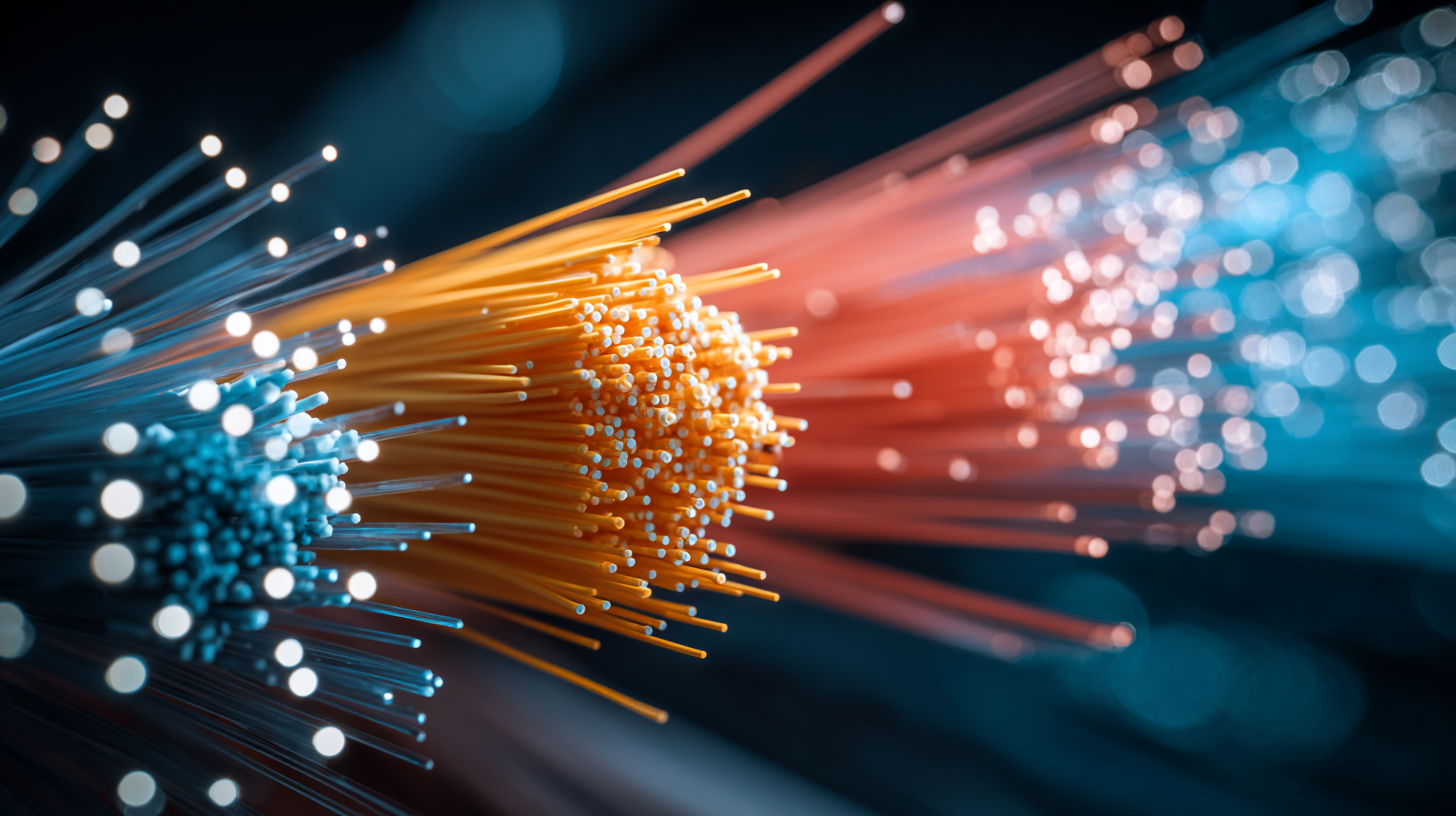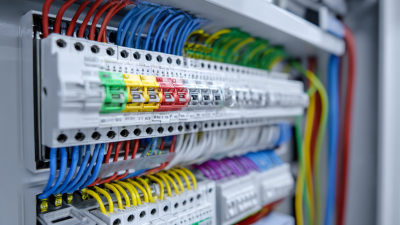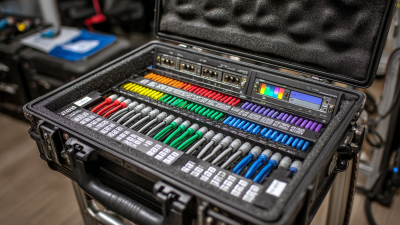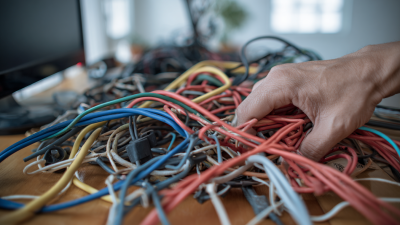Understanding the Benefits of Fiber Optic Ethernet Cable for Modern Networking Needs
As organizations increasingly rely on high-speed internet connectivity to support their expanding digital infrastructure, the importance of choosing the right networking solutions cannot be overstated. Among the various options available, fiber optic ethernet cable has emerged as a superior choice, delivering unparalleled advantages in performance and reliability. According to a report by MarketsandMarkets, the global fiber optic cable market is projected to reach $9.2 billion by 2025, reflecting a compound annual growth rate (CAGR) of 10.9% from 2020. This growth is fueled by the rising demand for bandwidth-intensive applications such as cloud computing and video conferencing. Fiber optic ethernet cable not only provides higher data transfer rates—up to 100 Gbps—but also improves network security and reduces latency. In this guide, we will explore the myriad benefits that make fiber optic ethernet cables an essential component for modern networking needs, ensuring businesses can stay ahead in an increasingly competitive digital landscape.

The Evolution of Networking: Why Fiber Optic Technology Stands Out
 Fiber optic technology has revolutionized the networking landscape over the past few decades. Unlike traditional copper cables, fiber optic cables utilize light to transmit data, which allows for significantly higher bandwidth and faster speeds. According to a report by the International Telecommunication Union, fiber networks can support speeds up to 1 Gbps or more, compared to typical copper connections, which usually max out at 100 Mbps. This unprecedented speed is essential for modern applications ranging from streaming high-definition content to supporting vast cloud services, making fiber the backbone of today’s digital communication.
Fiber optic technology has revolutionized the networking landscape over the past few decades. Unlike traditional copper cables, fiber optic cables utilize light to transmit data, which allows for significantly higher bandwidth and faster speeds. According to a report by the International Telecommunication Union, fiber networks can support speeds up to 1 Gbps or more, compared to typical copper connections, which usually max out at 100 Mbps. This unprecedented speed is essential for modern applications ranging from streaming high-definition content to supporting vast cloud services, making fiber the backbone of today’s digital communication.
Tips: When considering an upgrade to fiber optic Ethernet, assess your current and future bandwidth needs. For businesses anticipating growth, opting for fiber can provide a scalable solution that meets increasing demands without frequent rewiring.
Moreover, fiber optic technology offers enhanced reliability and security. It is less susceptible to electromagnetic interference and environmental factors, which can often disrupt copper-based connections. This makes fiber an excellent choice for mission-critical applications where downtime can lead to significant financial losses. A study from the Fiber Optic Association highlights that organizations using fiber optic connections report a 50% reduction in network downtime compared to those relying on copper solutions.
Tips: Ensure proper installation and maintenance of fiber optic cables to maximize their lifespan. Regularly check for any physical wear, and consider professional help for troubleshooting to maintain optimal performance.
Key Benefits of Fiber Optic Ethernet Cables for High-Speed Connections
Fiber optic Ethernet cables are transforming the landscape of modern networking, offering unparalleled speed and efficiency for both businesses and individuals. One of the key benefits of these cables is their capability to support high-speed connections that traditional copper cables struggle to match. According to a report by the Fiber Optic Association, fiber optic technology can transmit data at speeds up to 100 Gbps, making it ideal for bandwidth-intensive applications such as video streaming and large data transfers.
Moreover, fiber optic cables exhibit lower latency compared to their copper counterparts. A study by Cisco found that reducing latency is crucial for applications requiring near real-time communication, such as online gaming and teleconferencing. With fiber, the speed of light enables data to travel longer distances without degradation, ensuring consistent performance even in high-demand environments.
**Tip:** When considering upgrading to fiber optic Ethernet, assess your current and future bandwidth needs to choose the right cabling solution. Additionally, ensure compatibility with your existing hardware for a smooth transition. Adopting fiber optics can significantly enhance your network’s reliability and speed, positioning your infrastructure for future technological advancements.

Comparing Fiber Optic Ethernet with Traditional Copper Cables
Fiber optic Ethernet cables are rapidly becoming the go-to solution for modern networking needs, especially as traditional copper cables struggle to keep up with increasing bandwidth demands. One primary advantage of fiber optic cables is their ability to transmit data over long distances without significant signal loss, making them ideal for expansive networks. This is particularly crucial in a world transitioning towards digital communication, where efficient data transfer is paramount.
In contrast, traditional copper cables tend to suffer from interference and attenuation, which can degrade performance over time. As the shift towards digital voice solutions and the discontinuation of landline services intensifies, organizations should consider upgrading their infrastructure to accommodate the need for faster, more reliable connectivity.
Tips: When planning to upgrade to fiber optic Ethernet, evaluate your organization's current and future bandwidth requirements. Consider consulting with networking professionals to determine the best solutions tailored to your specific needs. Additionally, ensure proper installation to maximize the benefits of fiber technology, as the intricate nature of fiber optics requires careful handling to prevent damage.
Understanding the Benefits of Fiber Optic Ethernet Cable vs. Traditional Copper Cables
Real-World Applications: Fiber Optic Ethernet in Today’s Businesses
As businesses continue to evolve in an increasingly digital landscape, the adoption of Fiber Optic Ethernet cables is emerging as a pivotal move in enhancing connectivity. According to a report by the Fiber to the Home Council, over 80% of businesses that have switched to fiber optics have experienced significant improvements in their network performance, with speeds often exceeding 1 Gbps. This high-speed capability allows for seamless data transmission, which is paramount for modern applications such as cloud computing, high-definition video conferencing, and real-time data analysis.
Moreover, Fiber Optic Ethernet cables offer remarkable reliability and reduced latency, essential for businesses that operate in fast-paced environments. A study by the International Data Corporation (IDC) highlights that organizations using fiber optics can decrease latency by up to 75%, which can be a game changer for industries requiring instantaneous data processing, such as finance and e-commerce. Furthermore, the durability and longevity of fiber optic cables, which are less susceptible to electromagnetic interference, translate into lower maintenance costs and greater operational uptime—important factors for any business aiming to optimize its infrastructure for growth.
Understanding the Benefits of Fiber Optic Ethernet Cable for Modern Networking Needs - Real-World Applications: Fiber Optic Ethernet in Today’s Businesses
| Application Area | Benefits | Typical Bandwidth | Distance Range | Deployment Example |
|---|---|---|---|---|
| Data Centers | High-speed data transfer, low latency | 10 Gbps to 100 Gbps | Up to 10 km | Cloud services |
| Office Networks | Reliable connections, increased bandwidth | 1 Gbps to 10 Gbps | Up to 300 m | Corporate headquarters |
| Remote Work Solutions | Enhanced video conferencing, VPN speed | 1 Gbps | Variable, up to service limits | Home office setups |
| Manufacturing | Real-time data analytics, IoT integration | 10 Gbps | Up to 2 km | Smart factory operations |
| Healthcare | Fast access to patient information, telemedicine | 1 Gbps to 10 Gbps | Up to 500 m | Hospital networks |
Future-Proofing Your Network: The Role of Fiber Optic Solutions
In the rapidly evolving world of technology, future-proofing your network has become a critical priority for businesses seeking to maintain competitive advantage. Fiber optic solutions emerge as a key player in this landscape, offering remarkable bandwidth capabilities that support the increasing demands of modern applications. According to a report by the International Telecommunication Union, fiber optic connections can transmit data at speeds of up to 100 Gbps over distances exceeding 40 kilometers, making them ideal for data-intensive environments and cloud computing needs.
Moreover, as organizations pivot towards remote work and digital transformation, the necessity for reliable, high-speed connectivity is more important than ever. The Fiber Broadband Association highlights that fiber networks deliver consistently lower latency and higher reliability compared to traditional copper-based systems, with studies indicating that fiber can reduce latency by up to 80%. By investing in fiber optic Ethernet cables, businesses not only enhance their current network capabilities but also ensure they are well-positioned to accommodate future technological advancements, such as 5G implementation and the Internet of Things (IoT).
Related Posts
-

Challenges Faced by Businesses Using Ineffective Cable Management Tools
-

How to Select the Best RJ45 Cable Tester for Your Networking Needs: A Comprehensive Guide
-

Unlocking the Future: How Structured Wiring Enhances Your Smart Home Experience
-

Ultimate Guide to Choosing the Right Cable Tester for Your Networking Needs
-

7 Strategies for Effective Wire Management: Boost Your Business Efficiency by 30%!
-

How to Choose the Right Coax Adapters for Your Connectivity Needs






